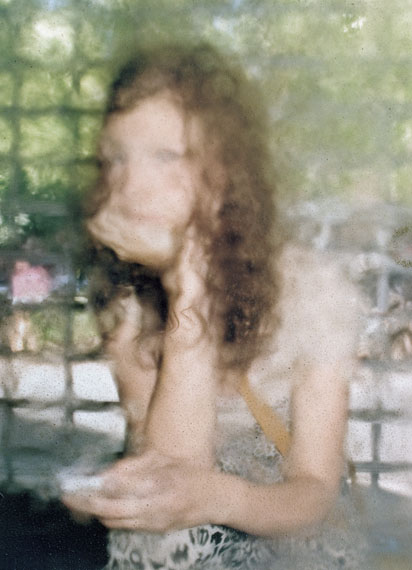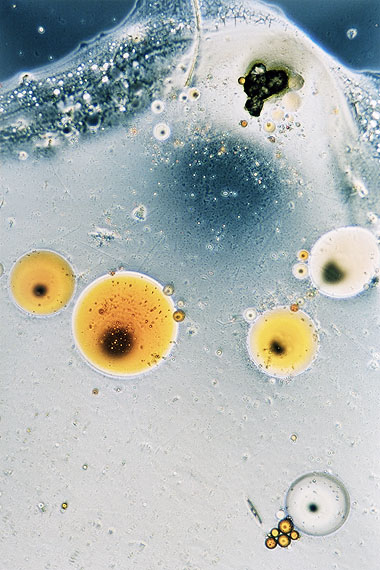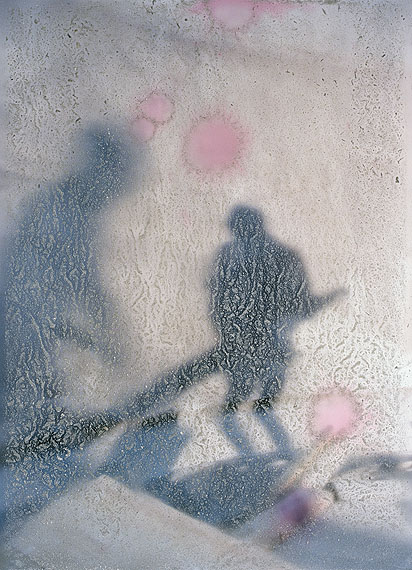
Stephen Gill »
COEXISTENCE
Exhibition: 29 Sep 2012 – 25 Aug 2013
Fri 28 Sep 16:00
CNA Centre National de l'Audiovisuel
1b, rue du Centenaire
3475 Dudelange

CNA Centre national de l'audiovisuel
1b, rue du Centenaire
3475 Dudelange
+352-522424-1
Wed-Sun 12-18

COEXISTENCE
Stephen Gill
29th of September 2012 – 10th of February 2013
COEXISTENCE is the outcome of a commission awarded to British artist Stephen Gill by the CNA in 2011 in anticipation of the inaugural exhibition of the Waassertuerm+Pomhouse, two new sites dedicated to photography in Luxembourg.
The brief was to work in situ and create a body of works that offer a dialogue between the unique site – and its indusdtrial heritage – with the CNA’s archival collection The Bitter Years, housed by the Waassertuerm. Stephen Gill’s immediate response was to survey the industrial wasteland around the Dudelange water tower. He spent six weeks living in the Italian quarter of the Dudelange, and embarked on an intense period of research and creation. The industrial cooling ponds immediately appealed to Gill, who has had a fascination for insects and microbes since childhood.
Gill immersed himself in the microscopic universe of the cooling ponds. He meticulously and patiently explored the abandoned terrain, aware of the memories and souvenirs it holds.
After six weeks of intense interaction with the site and the local population, Stephen Gill created a body of work that tells many stories. Coexistence ultimately seeks to draw parallels between the microscopic life of the ponds and the individual beings making up our society.
The visual language developed by the artist offers an unusual way of telling the story of a site, an era, and context. He works with various materials and photographic techniques, using a multitude of details and layers within one image to capture and reveal the spirit of the site.
As a series, Coexistence questions the photographic language and how we document the world today. Curated by Marguy Conzémius, Michèle Walerich
Biography
Stephen Gill (b. 1971, Bristol, UK) became interested in photography in his early childhood, thanks to his father and interest in insects and initial obsession with collecting bits of pond life to inspect under his microscope. Gill has emerged as a major force in British photography, his photographic work has been exhibited and held in collections at many international galleries, museums and festivals including London’s National Portrait Gallery, Tate, The Victoria and Albert Museum, Photographers’ Gallery, Rencontres d’Arles, The Toronto photography festival and PHotoEspaña.
Gill has gained special recognition for his numerous original and beautiful photo books such as Invisible, Hackney Wick, A Series of Disappointments, Archaeology in Reverse, Coming up for Air, A Book of Birds, Outside In and more. Stephen founded his publishing imprint Nobody in 2005 in order to exercise maximum control over the publication process of his books. Experimentation with materials, and a hands-on, tactile approach to maquette making lead, in many cases, to his finished books having an individual, unique presence. This tactile approach includes various materials and techniques and on occasion entire books are manufactured and assembled by hand in Stephen’s Hackney studio.
ARTIST’S STATEMENT
In the summer of 2010 I was asked by CNA if I would be interested in making a photographic response to an area containing a pond situated within an industrial wasteland – the remains of the deceased steelmaking industry in Dudelange, Luxembourg.
My only previous experience with ponds had been during my teenage years, when an obsession with pond life led me to spend long hours in my bedroom wearing a lab coat and peering into a microscope. That obsessive immersion into a strange and disorientating world had a profound effect on me personally, and certainly left its mark on many of the photographic studies I have subsequently produced.
I knew that the pond in Dudelange would be teeming with unseen life now that its industrial past had come to an end. From the 1920s until it was put out of use in 2006 the pond had been used to cool the blast furnaces, and tiny but dense communities would be now forming and thriving in the absence of that extreme heat.
For the eight months leading up to my first visit to the territory, my mind increasingly started tuning into microscopic worlds within worlds, and I became ever more aware of the many parallels between patterns and processes in the pond and those in our own lives as individual humans within societies.
Slowly I became committed to the idea of attempting to bring these two apparently disparate worlds – so physically close yet so different in scale – visually closer together.
Grappling with the idea of knitting together these parts of life that coexist but don’t belong together nor are ever usually seen together, I decided to make a photographic study that would resemble a kind of tapestry.
The University of Luxembourg kindly taught me to use one of their medical microscopes so that I was able to study single drops of the water, and I began searching the pond for diatoms and other minuscule creatures and plant life.
The more I thought about the human factor that was so essential to the series forming in my head, the more I wanted to involve local people from the small town of Dudelange, which has a substantial community of families with Portuguese and Italian origins.
Many of these people used to work in the steelmaking industry.
For health and safety reasons it was not possible to invite people to come to the cooling ponds, so I decided instead to take the pond to the people. I filled a bucket with water from the pond, and dipped my underwater camera into this pond water prior to making portraits of the Dudelange residents. Later on I also dipped the prints into the pond itself, so microscopic life was also transferred onto the surface of the paper. Stephen Gill, 2012.
EDITION
The book COEXISTENCE was produced by Stephen Gill in the framework of a photographic commission for the Centre national de l’audiovisuel (CNA) in spring 2011 in Dudelange (Luxembourg).
Published by Centre national de l’audiovisuel (CNA), in collaboration with Nobody Books in 2012.
Edition: 1500 copies. Edited, sequenced and coproduced by Stephen Gill. Book Design by Melanie Mues. Limited edition of 6 covers with selected reproductions from handmade marbled papers by Stephen Gill.
RELATED EVENTS & MEDIATION
Thursday 29 November 2012. 19.30-21.00: Photographie et … Sciences.
Lecture by Vera Langers.
Location : CNA / CinéStarlight2.
Free admission.
By taking as starting point the exhibition COEXISTENCE by Stephen Gill shown at DISPLAY01, this conference’s subject is the multiple links between photography and science. Will be discussed not only approaches of the 19th century in disciplines such as medicine, anthropology or geology, but also contemporary initiatives approaching the subject at the level of technical realization, shape or content.
Thursday 17 January 2013. 19.30-20.00: Meet the … Book Designer.
Lecture by Melanie Mues on her book creations in collaboration with Stephen Gill since 2004.
Location: CNA / Salle de preparation.
Admission: 10 € / 5€ (discount). Max. participants : 15.
Thursday 31 January 2013. 19.30: Screenings … Melancholia.
Movie written and directed by Lars von Trier. 2011. 130 min. Selected by Stephen Gill in resonance with COEXISTENCE.
Location: CNA / CinéStarlight2.
Admission: 4 €.
